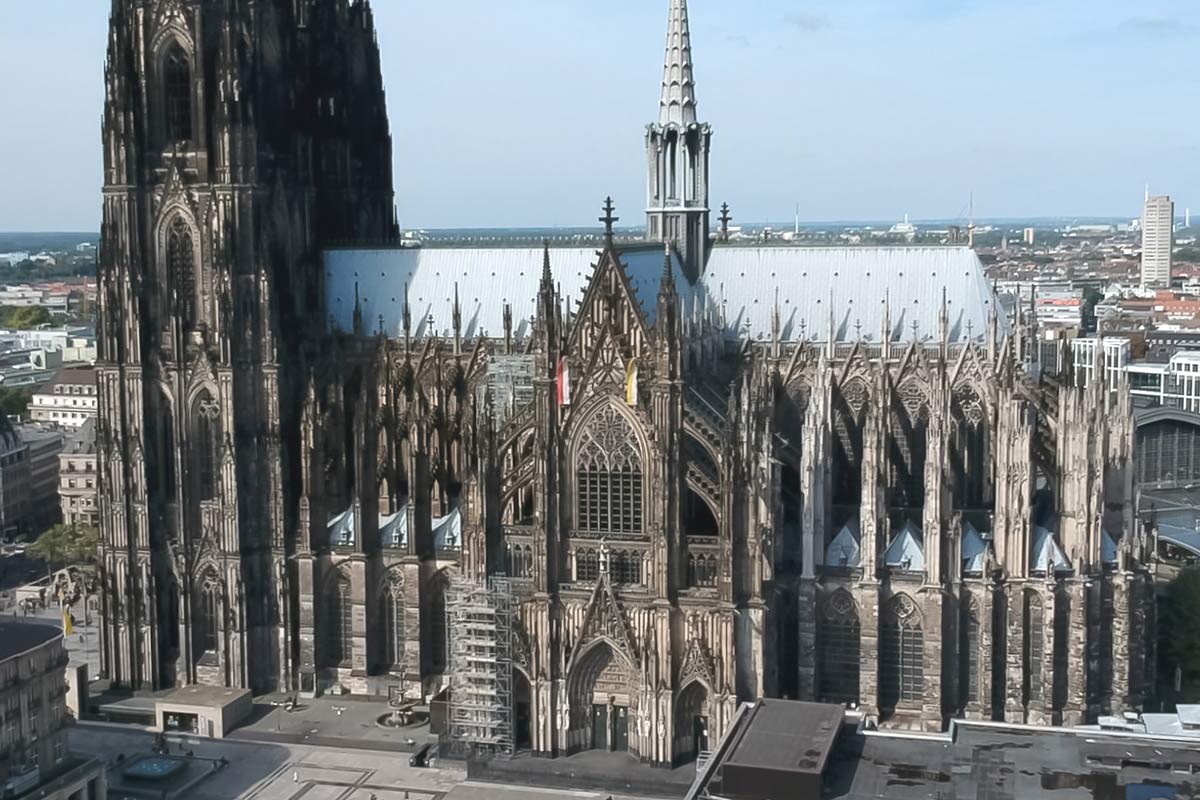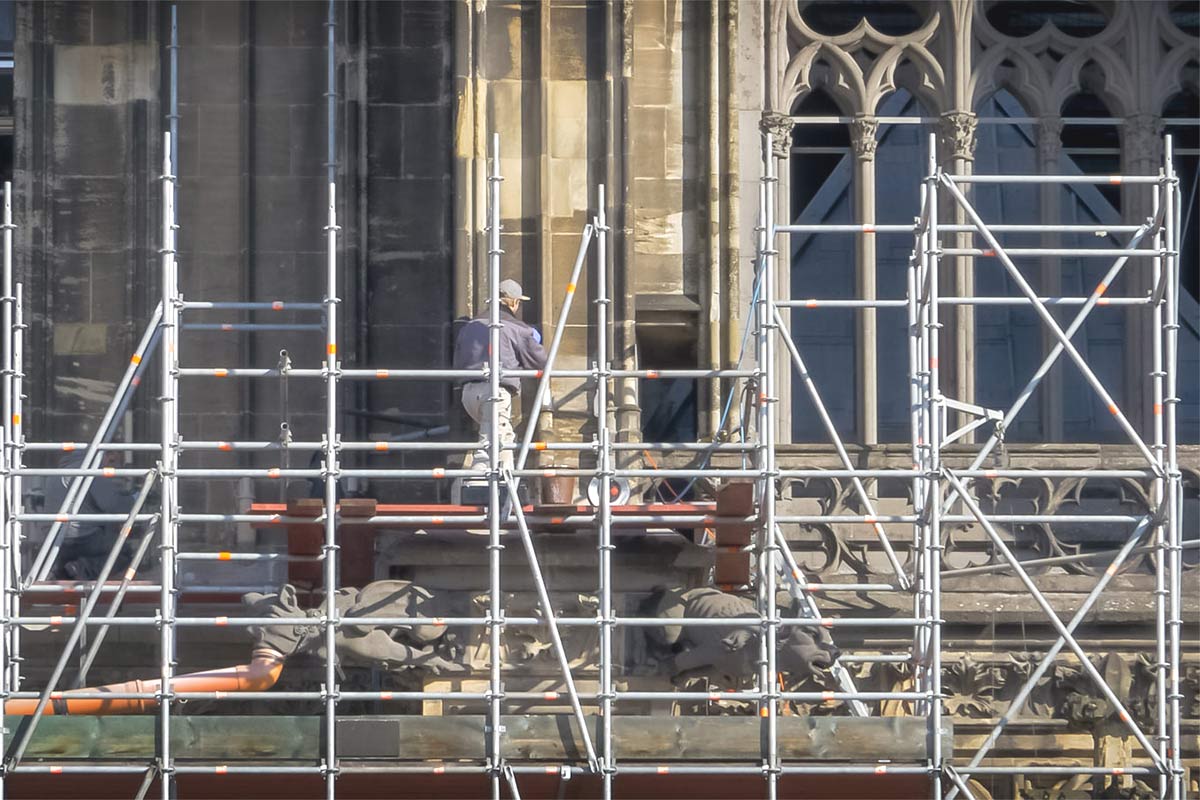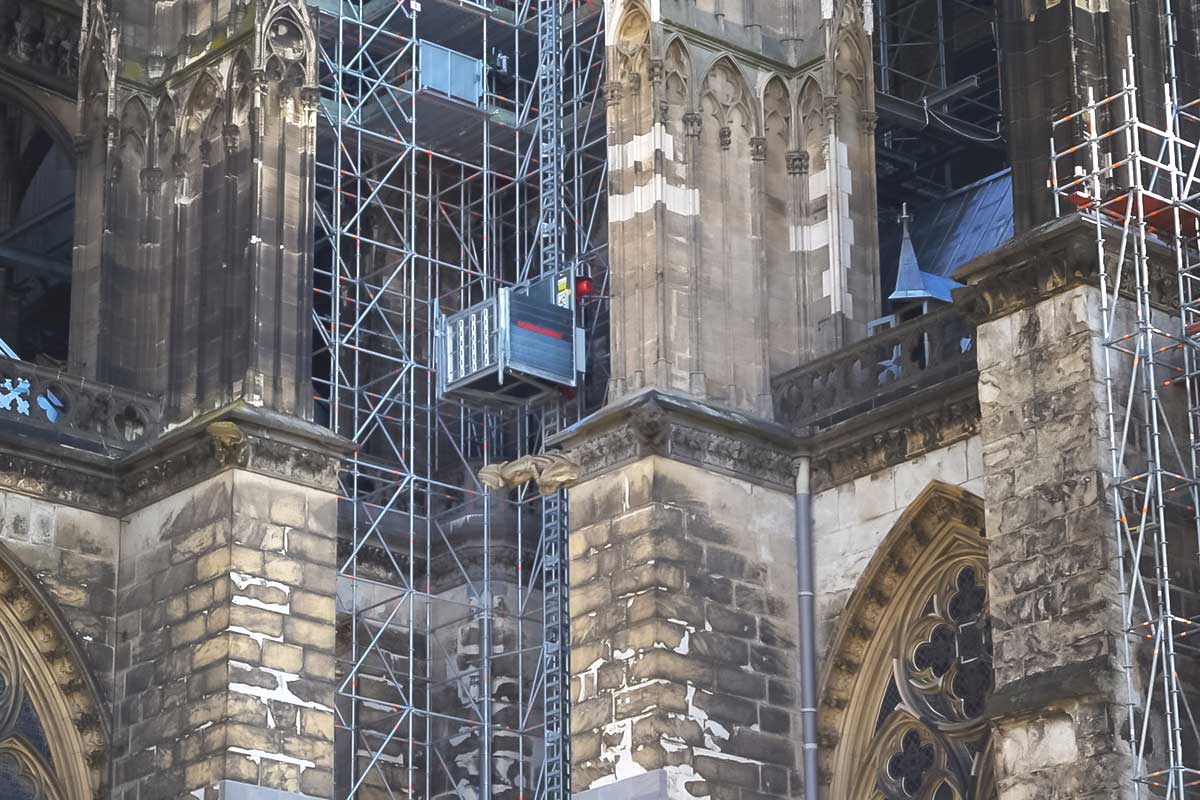The Roman Catholic Cathedral in Cologne is one of the most visited landmarks in Germany with an average of 20,000 visitors a day. This six-hundred-year-old cathedral was built over a period of 300 years. Restoration work on it continues to this day; an everlasting project with an annual restoration budget of 10 million euros.
Building dimensions
Cologne Cathedral is a huge building. It is currently the tallest twin-spired church in the world, reaching 157 m.
Additional key dimensions to illustrate the proportions of the building:
- External length 144.58 m
- External width 86,25 m
- Height of southern tower 157,31 m
- Height of northern tower 157,38 m
- Building area 7,914 m²
- Window surface area 10,000 m²
- Roof surface area12,000 m²
- Gross volume without buttresses 407,000 m³

The towers of the two huge spires give the cathedral the largest façade of any church in the world.
Short history
Construction of Cologne Cathedral commenced in 1248, was halted in 1473, and resumed again in the 19th century. It was finally completed in 1880.
Cologne’s medieval builders had planned a grand structure to house the shrine of the Three Kings and as a place of worship for the Holy Roman Emperor. Despite having been left incomplete during the medieval period, Cologne Cathedral was seen as “a masterpiece of exceptional intrinsic value” and “a powerful testimony to the strength and persistence of Christian belief in medieval and modern Europe”
…but construction work continues.
Responsibility for Cathedral restoration- Dombauverwaltung

All historical buildings have to be taken care of if they are to be preserved. Gothic structures like the Cologne Cathedral are very fragile because of their intricate surfaces. A dedicated organization is responsible for the continuous preservation work of Cologne Cathedral, Köln Dombauvervaltung (=Cologne Cathedral construction management organization).
Köln Dombauvervaltung has a staff of 80 persons. Thirty of them are craftsmen such as stone masons, scaffold makers, roofers and carpenters. Many others are working to repair or reconstruct parts of the structure that have been damaged by weather or simply old age. These experts often use modern versions of the tools and materials that were common in the Middle Ages.
Cologne Cathedral and Triple hoist

Both workers and tools needed to be transported to different floors and to a maximum height of 100 meters. Hoists and scaffolding would both be used at the Cathedral. The vertical transportation system fastenings should not touch Cathedral façade or structures.
After long consideration, they chose Scanclimber Triple Hoist SC8 as their permanent/movable vertical transport media at Cologne Cathedral
Main reasons why Cologne Domebauvervaltung chose Scanclimber Triple Hoist:
- Lightweight and easy to move, with an 800 kg capacity.
- Callability of the platform — the hoist/platform can be called to different floors.
- Speed capability of 24m/min. (often only 12m/min).

A Scanclimber Triple hoist was deemed the most feasible solution available.
Deutche Welle’s video about Cologne Cathedral’s eternal restoration work
Stone masons, glass restoration experts, and many others are working to repair or reconstruct parts of the structure that have been damaged by weather, or are simply showing signs of old age. These experts often use modern versions of the tools and materials that were common in the Middle Ages. This video features interviews with many of those who are involved in this work, including the construction and restoration supervisor. It’s the story of a cathedral that has been “under construction” for decades.
| Project Facts | |
|---|---|
| Location of the Project | City of Köln in Germany |
| Responsible for the restoration works | Dombauvervaltung |
| Start of project | July, 2014 |
| Est. completion of project | Continues |
| Machines used | Transport Platforms |
| Models | 1 x Triple Hoist SC8 |
| Main use of the machine | Transportation of personnel, material and tools. |

